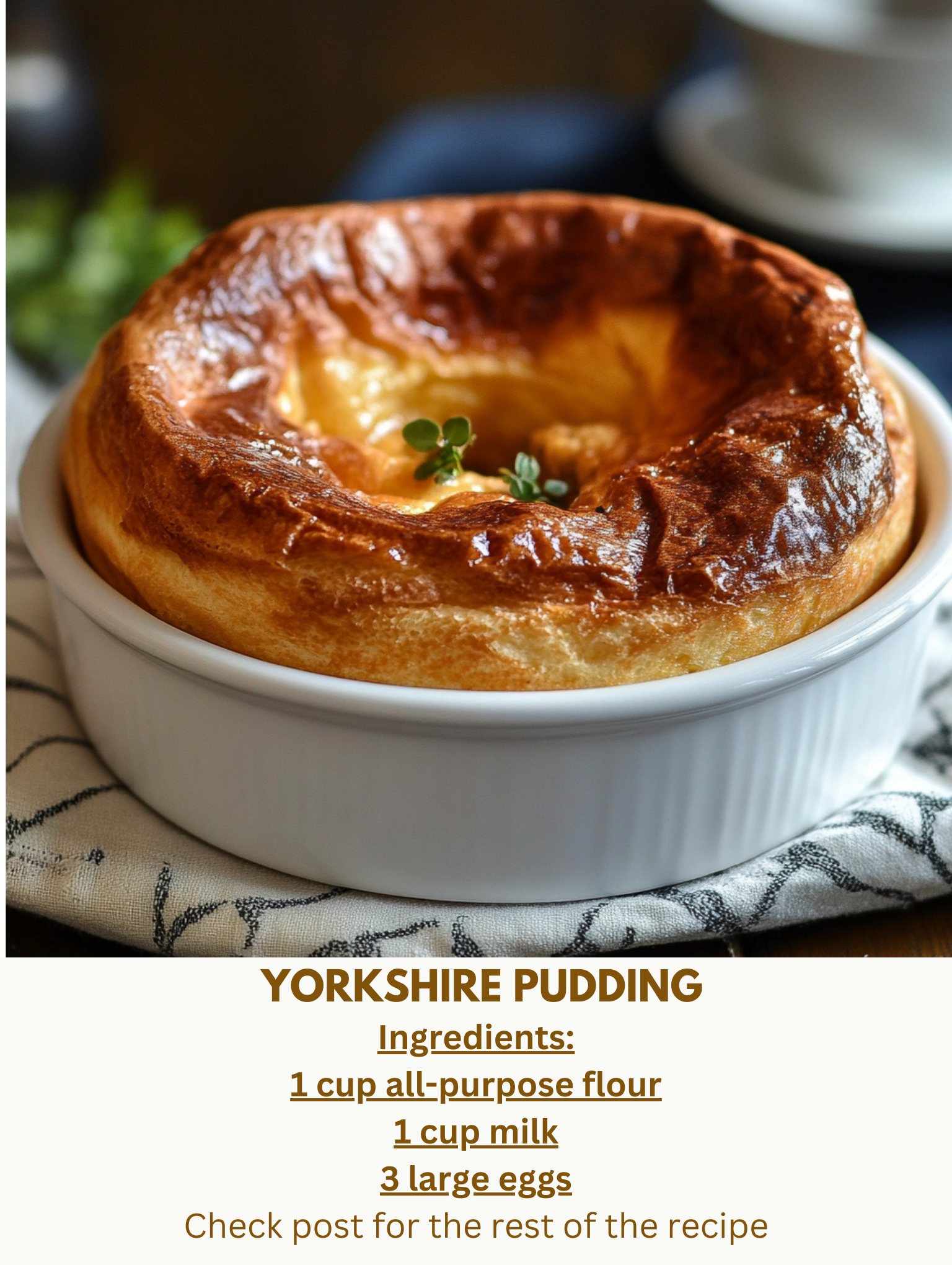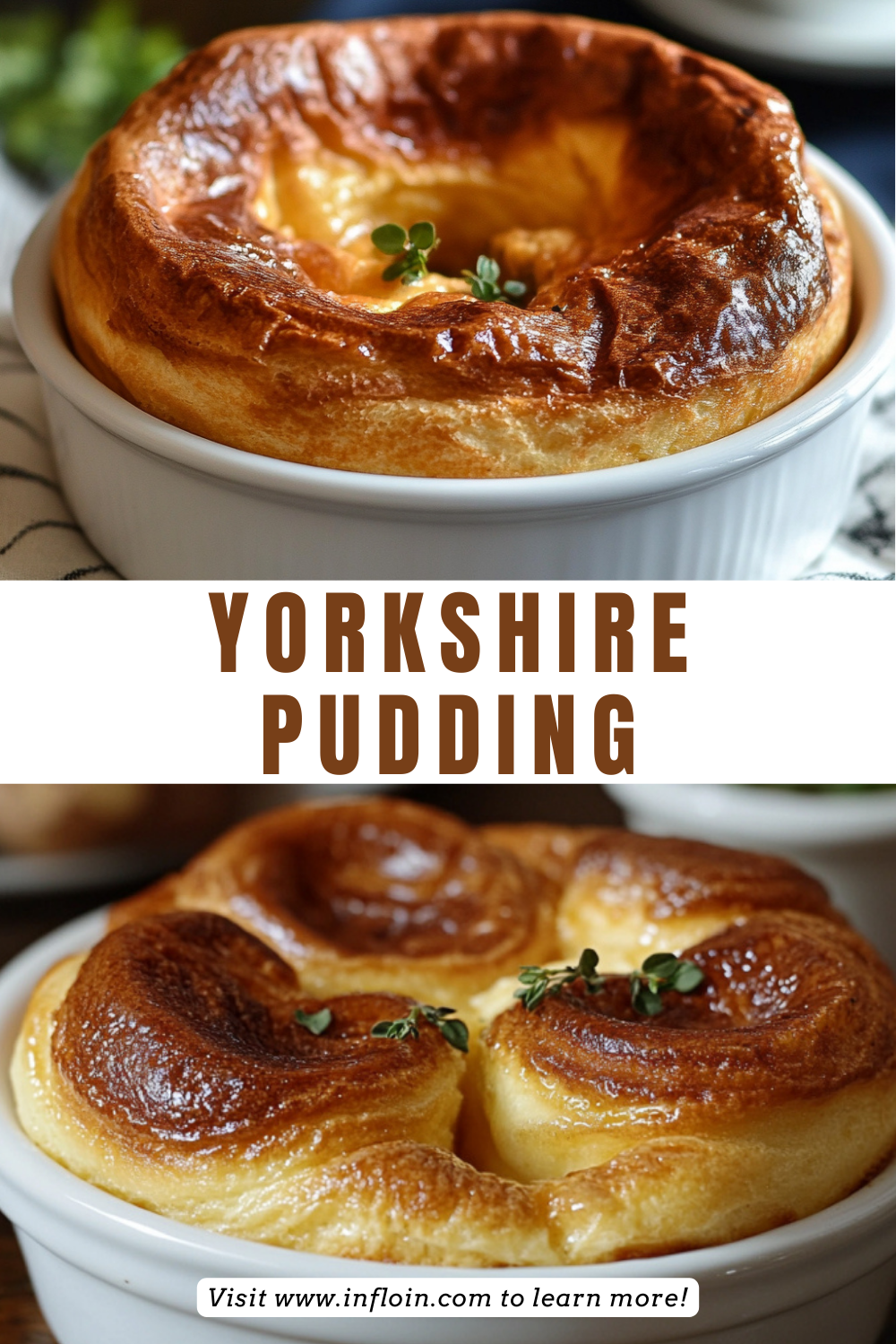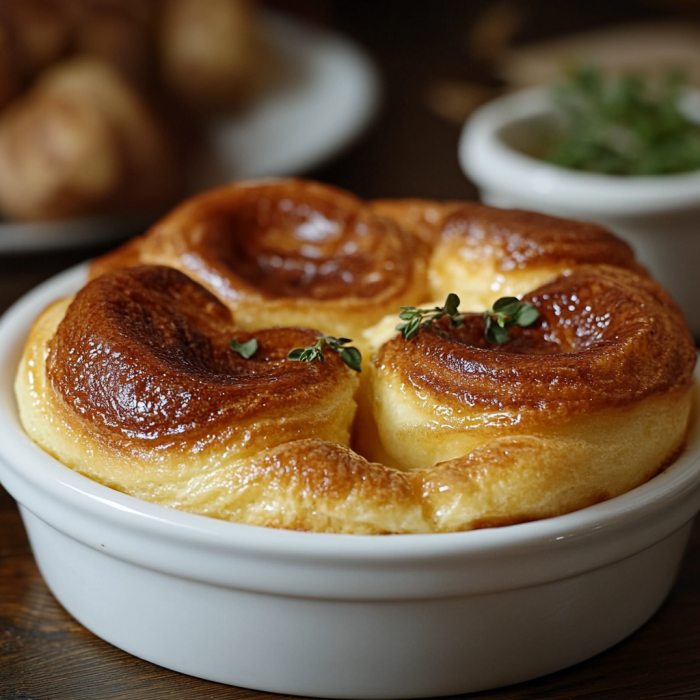Yorkshire pudding is a traditional British dish that has delighted taste buds for centuries. Originating from Northern England, this savory pudding is a staple in many households, especially during Sunday roasts. In this comprehensive guide, we will explore the history, preparation, variations, and much more about Yorkshire pudding.
Introduction
Yorkshire pudding is a classic British side dish made from a simple batter of eggs, flour, and milk or water. Traditionally served with roast beef and gravy, it has become a beloved part of British cuisine.
History of Yorkshire Pudding
The origins of Yorkshire pudding date back to the 18th century. Originally known as “dripping pudding,” it was created by cooks in Northern England to make use of meat drippings. The batter was cooked beneath roasting meat, absorbing the flavorful drippings and rising to form a light, airy pudding. Over time, it became known as Yorkshire pudding, reflecting its regional roots.
Traditional Preparation Method
Ingredients
-
Batter:
-
1 cup all-purpose flour
-
1 cup milk
-
3 large eggs
-
1/2 teaspoon salt
-
1/4 cup beef drippings (or vegetable oil as a substitute)
-

Instructions
-
Prepare the Batter:
-
In a bowl, whisk together the flour, milk, eggs, and salt until smooth. Avoid overmixing to prevent tough puddings. Let the batter rest for at least 30 minutes; this allows the flour to fully hydrate, resulting in a better texture.
-
-
Preheat the Pan:
-
Pour the beef drippings into a 12-cup muffin tin, placing a teaspoon in each cup. Heat the tin in the oven at 400°F (200°C) until the fat is smoking hot, approximately 5-6 minutes. This step is crucial for achieving the characteristic rise and crispiness of Yorkshire puddings.
-
-
Bake the Puddings:
-
Carefully remove the hot tin from the oven. Quickly pour the rested batter evenly into the muffin cups, filling each about halfway. Bake for 20-25 minutes without opening the oven door, until the puddings have risen and are golden brown. Serve immediately.
-
Variations and Substitutions
While the traditional recipe uses beef drippings for flavor, there are several variations and substitutions to suit different dietary preferences:
-
Vegetarian Version: Use vegetable oil or sunflower oil instead of beef drippings. This substitution maintains the puddings’ rise and texture without compromising flavor.
-
Gluten-Free Option: Substitute all-purpose flour with a gluten-free flour blend. Ensure the blend contains xanthan gum to provide structure.
-
Vegan Adaptation: Replace eggs with flaxseed meal mixed with water (1 tablespoon flaxseed meal + 3 tablespoons water = 1 egg). Use plant-based milk such as soy or almond milk, and opt for vegetable oil instead of drippings.
Creative Twists
For those looking to experiment, consider these creative twists on the traditional Yorkshire pudding:
-
Stuffed Puddings: Before baking, add a small piece of cooked chicken or vegetables into each muffin cup. The batter will rise around the filling, creating a delightful surprise in every bite.
-
Miniature Puddings: Use a mini muffin tin to create bite-sized Yorkshire puddings, perfect for appetizers or party snacks.
Pairings and Accompaniments
Yorkshire puddings are incredibly versatile and pair well with various dishes:
-
Traditional Sunday Roast: Serve alongside roast beef, lamb, or chicken with a rich gravy.
-
Vegetarian Gravy: For a meatless option, pair with mushroom or onion gravy.
-
Breakfast Delight: Top with sautéed mushrooms and tomatoes for a hearty breakfast.
Comparison with Similar Recipes
Yorkshire puddings are often compared to American popovers and Dutch baby pancakes. While all three are made from a similar batter and baked in a hot pan, Yorkshire puddings are typically savory and served as a side dish, whereas popovers and Dutch babies are often sweet and served as desserts or breakfast items.

Frequently Asked Questions (FAQs)
What makes Yorkshire puddings rise more?
The key to a good rise is a hot baking tin and hot fat. Preheating the tin and fat ensures the batter starts cooking immediately, creating steam that lifts the pudding. Additionally, allowing the batter to rest helps in achieving a better rise.
What should the texture of Yorkshire pudding be?
A well-made Yorkshire pudding should have a crisp exterior with a soft, airy interior. The contrast in textures is achieved by baking in hot fat and avoiding opening the oven door during baking.
Do Yorkshire puddings reheat well?
Yes, Yorkshire puddings can be reheated. To maintain their crispiness, reheat in a hot oven for about 5-10 minutes. Avoid microwaving, as it can make them soggy.
Why are my Yorkshire puddings not crispy?
If your Yorkshire puddings aren’t crispy, it could be due to insufficiently preheated fat, overcrowding the tin, or opening the oven door during baking. Ensuring the fat is smoking hot and the oven remains undisturbed during baking can help achieve the desired crispiness.
Best Time to Enjoy Yorkshire Pudding
Traditionally, Yorkshire puddings are enjoyed during Sunday roasts, typically served as a first course with gravy. However, they are versatile enough to be enjoyed at any time of the day, whether as a side dish, appetizer, or even a dessert when served with sweet fillings.
Presentation Tips
To present Yorkshire puddings attractively:
-
Garnish: Sprinkle with fresh herbs like parsley or chives.
-
Serving Platter: Arrange on a warm serving platter with a bowl of gravy on the side.
-
Individual Servings: Serve in individual portions for a rustic, homely feel.
Conclusion
Yorkshire pudding is more than just a side dish; it’s a piece of British culinary heritage that has stood the test of time. Whether you stick to the traditional recipe or experiment with modern variations, this delightful pudding is sure to impress at any meal.
And for recipes lovers, you can check my friend’s blog here: www.infloin.com

